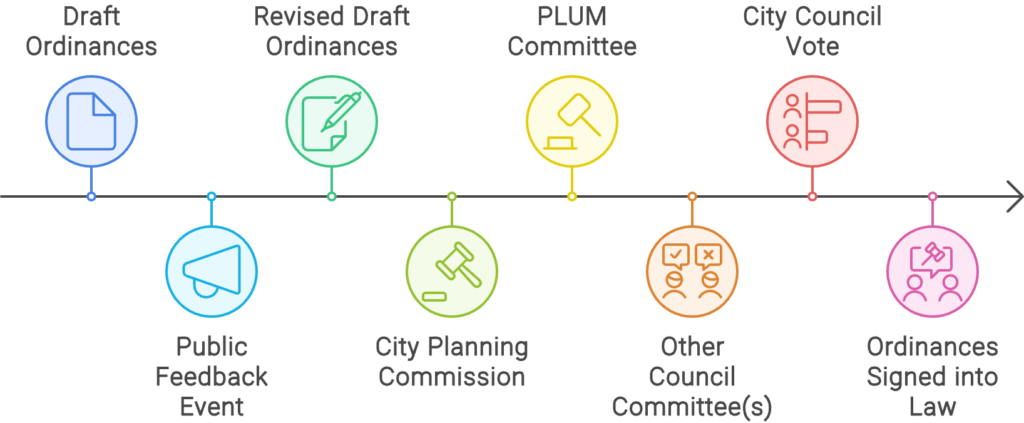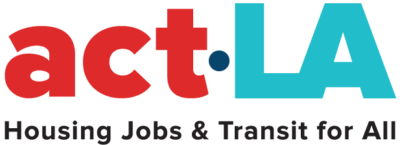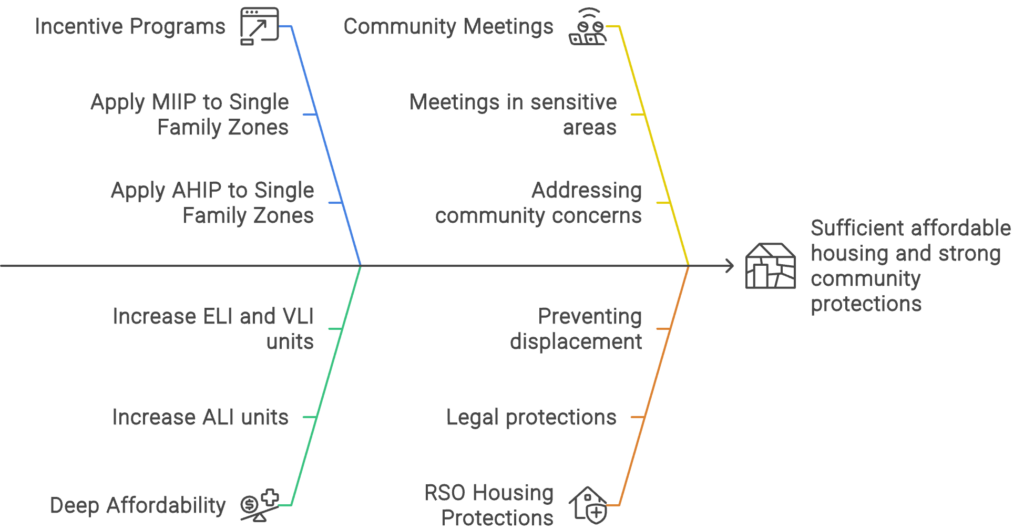Will We End Housing Instability in Los Angeles? The 2024 Rezoning Process is Critical

Right now, the City of Los Angeles is undertaking a rezoning process that will have long-term and far-reaching impacts across the city for decades to come. The City Planning Department has produced four draft ordinances that make up this process. This blog post will focus on the Citywide Housing Incentive Program ordinance (CHIP), with another blog post on the Resident Protection Ordinance coming soon, as these are the ordinances our coalition believes will have the greatest impact on housing in Los Angeles.
Why is this rezoning process happening?
The Housing Element Rezoning Program (which we will refer to as the ‘rezoning program), has been undertaken as a necessary step to meet LA’s housing needs and fulfill our statewide obligations around housing.
A few specific factors are driving this rezoning:
Every eight years, all California cities update their General Plan, as required by state law. The General Plan sets out goals for decisions related to land use, and contains a number of ‘Elements’ that address different topics (ex. Air quality, Conservation, Open space, etc.) In June 2022, our Los Angeles City Council adopted an updated version of the Housing Element as a component of the General Plan.
For decades, it was common practice for California cities, including Los Angeles, to adopt insufficient Housing Elements, or to adopt sufficient Housing Elements without the intent of ever following them. Recent changes to the legal and legislative environment in California have made significantly hurt the viability of these strategies:
The implementation of the Housing Element must fulfill our Regional Housing Need Assessment and accommodate over 450,000 housing units, with over 180,000 of those allocated for lower income families. We are currently very, very far behind this goal.
Los Angeles must also maintain compliance with Affirmative Furthering Fair Housing, a federal law which requires local agencies to take deliberate action to alleviate and combat disparities from past patterns of segregation.
Both of these requirements have been strengthened by changes to state law. Now, failure to appropriately target and apply these targets will lead to the loss of significant funding, meaningful legal exposure, and potentially the loss of local control over planning and building decisions (through a process known as ‘Builder’s Remedy’).
Why do we care so much about it?
In short, the CHIP outlines a set of incentives programs through which developers provide certain thresholds of affordable units in their buildings, and in exchange they receive streamlining benefits, increased density allocation, and more, which make their projects faster, easier, and more enticing. These programs provide a rare opportunity to shape development to meet our needs, rather than letting private developers create only unaffordable housing. Incentivizing where housing is built and the characteristics of that housing will lead to dramatic shifts in how our neighborhoods are shaped, and where tenants can live.
We see two major issues with the current draft.
First: there is not a viable path to building the housing needed to resolve the housing shortage, and stay in compliance with statewide requirements, without developing in single family areas. For context, over 70% of residential land in the City of Los Angeles is zoned for single-family homes. The omission of single family zoned areas from the affordable housing incentives will only deepen decades of racist segregation and the history of redlining in Los Angeles.
Second: We believe the ordinances must also deepen the affordability requirements, particularly for Angelenos in the lowest income brackets. Leaving too much room for developers to build expensive, luxury units contributes to speculation, and will likely result in expensive units left vacant, while people live on the street and struggle to find secure housing. For this reason, the CHIP should require higher amounts of very affordable housing, especially for individuals and families in the lowest income levels of Acutely Low Income (ALI), Extremely Low Income (ELI), and Very Low Income (VLI), in order for developers to benefit from the incentives. Provisions of affordability are especially critical in areas vulnerable to gentrification and displacement.
Of course, we have more than two recommendations. A more in-depth outline of what we believe needs to change in the CHIP ordinance can be found in our full letter to LA Planning.
What can I do to influence this process and achieve the most equitable and affordable housing in our City?
The best thing you can do is join the call for the City to make changes to the current ordinance drafts that will incentivize affordable housing across the entire City, deepen affordability, and prevent unnecessary demolition of rent-stabilized units. We created a one click email that you can use to share your support of the ACT-LA demands with City Planning, and City Council office staff. Feel free to modify it as you see fit or send it as is. You can also send a unique comment to housingelement@lacity.org.
What is the timeline for this rezoning process?

Above is a summary of the process for these ordinances to be approved into City law. In order to remain in compliance with State law, the City must approve these ordinances by February of 2025, although they have stated intent to do so by the end of 2024.

